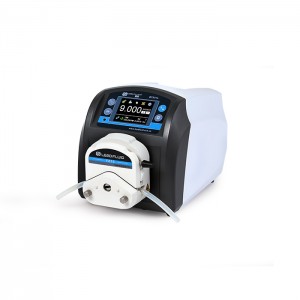Updated on December 1, 2023
How is the pump flow rate calculation and
The pump flow rate calculation depends on the type of pump and the available information.
Here are a few common methods used to calculate pump flow rate:
- Positive Displacement Pump: For positive displacement pumps, such as reciprocating pumps or rotary pumps, the flow rate can be calculated by measuring the displacement per stroke or the volume per revolution. The pump’s specifications or design parameters provide this information. The flow rate (Q) can be calculated using the formula: Q = Displacement per stroke (or volume per revolution) × Pump speed (strokes per minute or revolutions per minute).
- Centrifugal Pump: For centrifugal pumps, the flow rate is typically determined by the pump’s performance characteristics, such as the pump curve. The pump curve provides the relationship between the flow rate and the head (pressure) generated by the pump. By knowing the head and selecting a point on the pump curve, the corresponding flow rate can be obtained.
- Flow Meter: Another common method to calculate pump flow rate is by using a flow meter installed in the pump’s discharge line. Flow meters, such as electromagnetic, ultrasonic, or turbine flow meters, directly measure the flow rate of the fluid passing through them. These flow meters provide real-time flow rate readings.
- Pump Efficiency: In some cases, the pump flow rate may be calculated indirectly by measuring the power input to the pump and the pump efficiency. The flow rate (Q) can be determined using the formula: Q = Power input / (Fluid density × Gravity × Pump efficiency), where the power input is measured in watts, fluid density is measured in kilograms per cubic meter, and gravity is approximately 9.81 m/s².
It’s important to note that pump flow rate calculations may involve additional factors, such as fluid viscosity, temperature, and system pressure, depending on the specific application. Additionally, different pump types and designs may require specific equations or considerations for accurate flow rate calculations. Consulting the pump manufacturer’s documentation or seeking professional engineering assistance is recommended for precise flow rate calculations.
Where is pump flow rate calculation generally applied ?
Pump flow rate calculations are applied in various industries and applications where the accurate measurement and control of fluid flow is important. Some common areas where pump flow calculations are utilized include:
- Water and Wastewater Treatment: Pump flow calculations are crucial in water treatment plants, wastewater treatment facilities, and water distribution systems. The flow rate of water or wastewater needs to be accurately measured and controlled to ensure efficient treatment processes, maintain desired water quality, and optimize system performance.
- Industrial Processes: Pump flow rate calculations are essential in industrial processes that involve the transportation of fluids, such as chemical manufacturing, oil and gas production, pharmaceutical production, food and beverage processing, and pulp and paper industry. Accurate flow rate measurements and control are necessary for process optimization, product quality assurance, and regulatory compliance.
- HVAC Systems: In heating, ventilation, and air conditioning (HVAC) systems, pump flow calculations are used to determine the flow rate of chilled water, hot water, or other fluids for space heating, cooling, and distribution. Proper flow rate control ensures optimal system performance, energy efficiency, and thermal comfort.
- Oil and Gas Industry: Pump flow calculations play a vital role in the oil and gas industry for processes such as crude oil pumping, pipeline transportation, refinery operations, and well stimulation. Accurate flow rate measurements are crucial for production optimization, pipeline integrity, and overall operational efficiency.
- Power Generation: Pump flow rate calculations are employed in power generation facilities, including thermal power plants, nuclear power plants, and renewable energy systems. Determining the flow rate of cooling water, fuel, or other fluids is essential for efficient heat transfer, equipment cooling, and power generation.
- Laboratory Research: In scientific laboratories, pump flow rate calculations are used in various research applications, such as chromatography, liquid handling systems, and sample analysis. Precise flow rate control ensures accurate and repeatable experiments and measurements.
- Medical and Healthcare: Pump flow calculations are utilized in medical and healthcare settings for applications like drug delivery, intravenous therapy, dialysis, and circulation support devices. Accurate flow rate control is critical for patient safety, medication dosage accuracy, and therapeutic effectiveness.
These are just a few examples of the broad range of areas where pump flow rate calculations are applied. In general, any industry or application that involves the movement, control, or measurement of fluids relies on accurate flow rate calculations to ensure optimal performance, efficiency, and safety.


